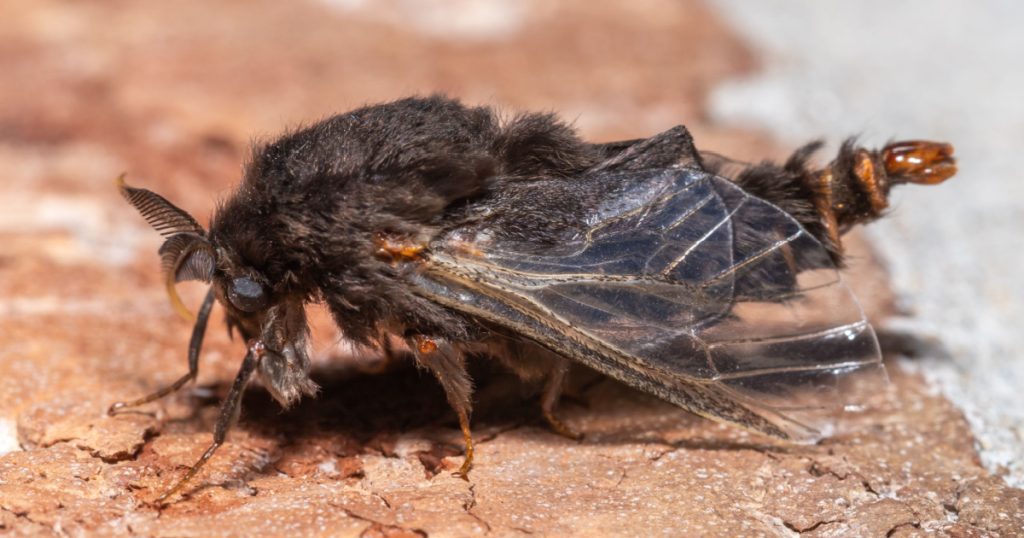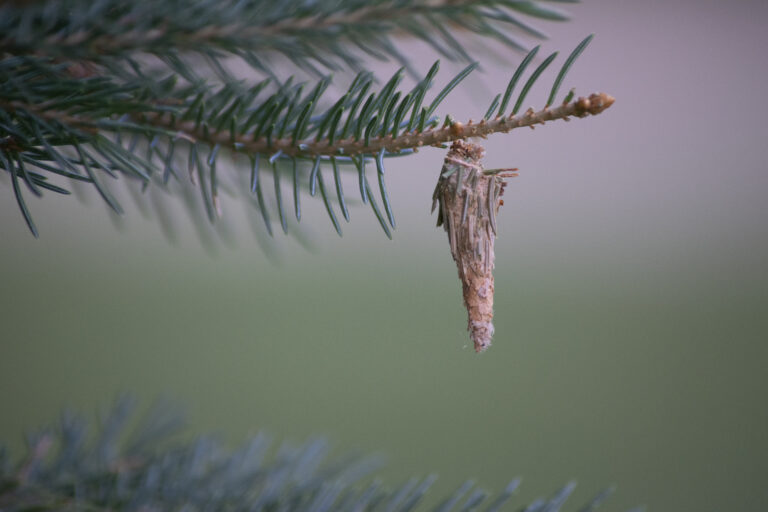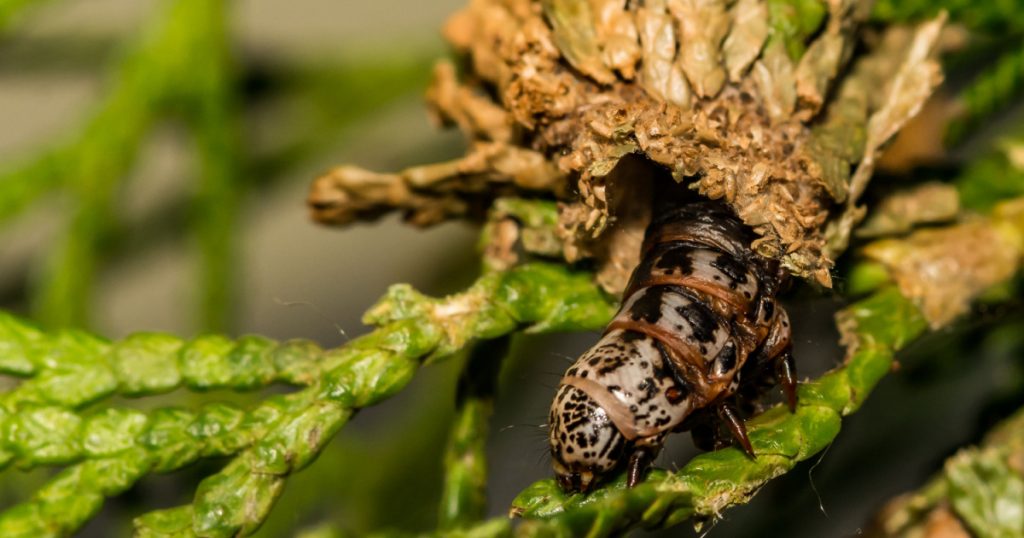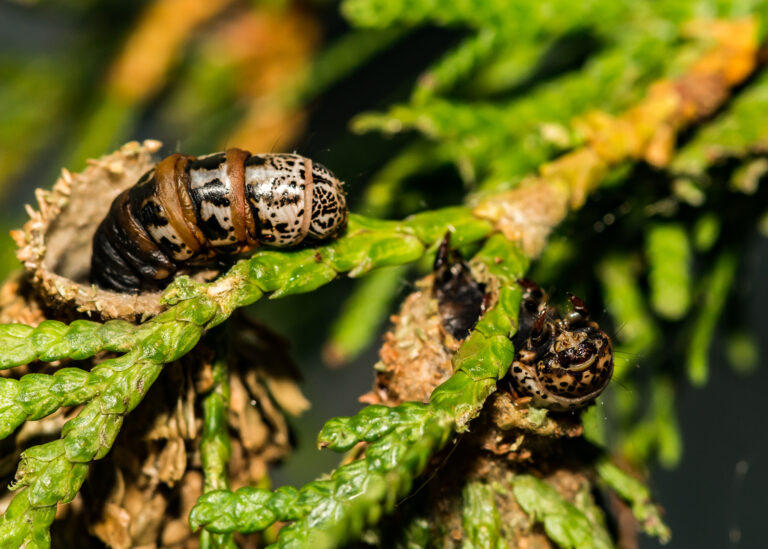Despite their name, which comes from the worm-like form of the larvae, these insects aren’t worms but moths.
The bagworms live their entire life cycle inside the safety of their bag, which they construct using silk and interwoven bits of foliage. These bags are created when the larvae attache bits of plant debris, such as leaves, twigs, and bark, to their bodies using a silk-like thread they produce. As they grow bigger, the bag gets bigger too.

The eggs of a female moth hatch in late spring or early summer.
Only the adult male moth leaves the protection of its bag when ready to mate while female moth doesn’t leave her bag.

Bagworms usually infest evergreen and deciduous trees and the bags they construct sometimes resemble a cone so people may overlook them at first glance.
Their favorite host plants are cedar, arborvitae, juniper, and false cypress, but in the absence of these preferred hosts, bagworm will eat the foliage of just about any tree: fir, spruce, pine, hemlock, sweetgum, sycamore, honey locust, and black locust.
Although they seem harmless, bagworms actually cause significant damage to the trees. The issue is that they hide until the infestation is severe.

As they feed on the leaves of the tree, it makes it more difficult for the tree to photosynthesize and produce the nutrients needed for growth and survival.
At the same time, they make the tree weaker, and with that, more prone to diseases, attacks from other pests, and environmental stressors. If not treated for bagworms, the tree can eventually die.
There are several ways of managing bagworms infestations. Some of them are explained below.
One of the ways is to pluck each of the bag/cocoon out of the tree one at a time. This is however possible if the number of trees affected is smaller. If you deal with a landscape of affected trees, each of which containing numerous bags of bagworms, this isn’t the most appropriate method.

Luckily, there are other methods available, such as:
Pruning and Destruction – In case of widespread infestation prune the affected branches and properly destroy them. Also, look for other places of infestation, such as nearby fences.
Encourage Natural Predators – Some birds and parasitic wasps feed on bagworms, so attracting them can come in handy when fighting against bagworms. Woodpeckers, for one, can even break apart the bags to eat the females or eggs inside. Encouraging this method, by making your yard or farm bird-friendly helps avoid using chemicals which otherwise kill the helpful insects too.

Chemical Control – If nothing else works, turn to chemical control such as acephate (Orthene), cyfluthrin, and spinosad, applied as sprays. It is important to have in mind that chemical control should be approached with caution and only used as a last resort, considering the potential environmental impact. In case you opt for chemical control, do it on a windless and dry day so the product dries quickly and doesn’t drift on the breeze.
It would be for the best to prevent the infestation of bagworms in the first place. This can be achieved with regular inspection of the trees, good maintenance, planting the trees at appropriate distance to avoid overcrowding, and by monitoring the surrounding vegetation, among the rest.
Please SHARE this article with your family and friends on Facebook.





